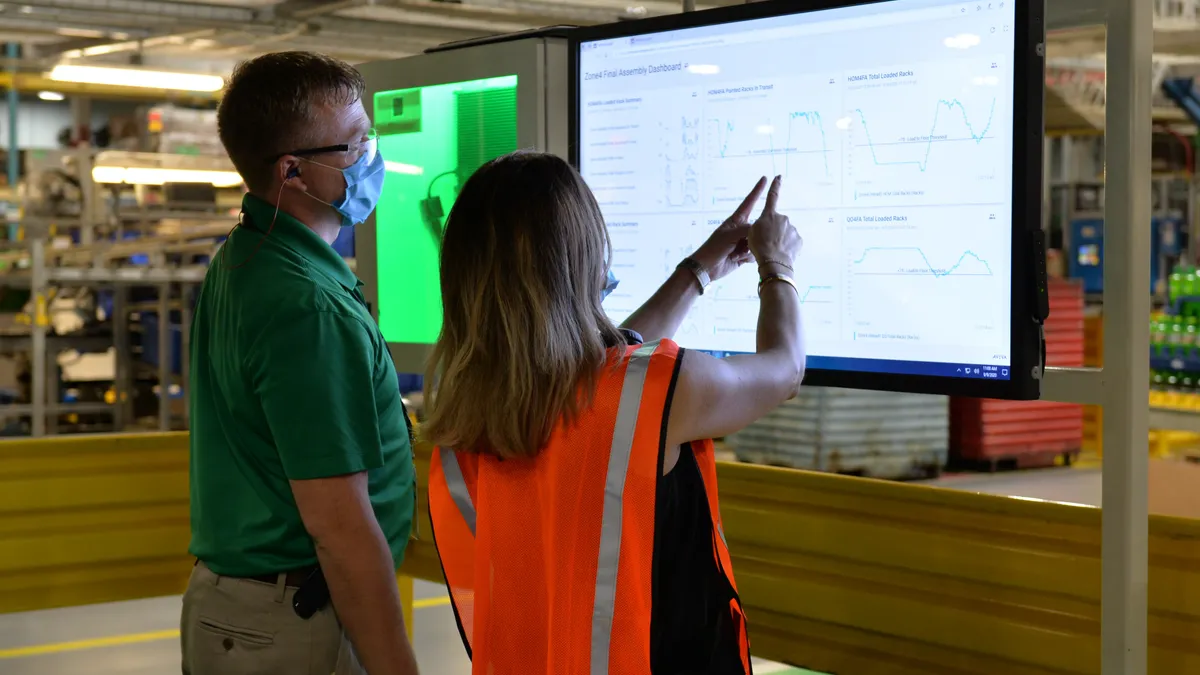Dive Brief:
- Schneider Electric will invest $40 million in its U.S. supply chain to increase resiliency and prepare for returning demand, the company announced Tuesday. The pandemic caused a slowdown in construction and other sectors core to Schneider's customer base, but its U.S. President Aamir Paul said the company is seeing construction projects slowly restart.
- The investment will go toward technology upgrades and hiring 130 new workers across Schneider's factories in Iowa, Kentucky, Nebraska and Texas.
- Schneider will also invest in new production lines and added capacity to shorten its supply chain for materials and parts that became difficult to procure during the pandemic, according to Paul.
Dive Insight:
Some of Schneider's upgrades were in the plan before the pandemic, but the direction and priorities changed over the course of 2020, Paul said. Schneider's global supply chain was disrupted from multiple angles and some supplier shortages are still not resolved.
"One of the things we learned was the fragility of our upstream suppliers was something we had to take into account," Paul said. "So making sure that we have some of that capability in-house matters."
Schneider's four U.S. factories vary in technological advancement. The Lexington, Kentucky, facility is its most advanced factory with an IoT-driven, RFID-enabled data operation that has landed it in the number four spot on Gartner's Supply Chain Top 25 for 2020. The company's Lincoln, Nebraska, facility is next in line for that kind of upgrade, but it's more of a journey than a single transformation, Paul said.
In its Cedar Rapids, Iowa, factory, some of the $40 million will go toward new capabilities and production lines that will allow it to work with fewer suppliers by finishing some of its own inputs. The factory will also add capacity to construct some components entirely in-house when necessary. Building up the ability to stand in for the last few links in its supply chain will allow Schneider to cut its supplier count.
The goal is "fewer, deeper supplier relationships," Paul said, adding that moving from a just-in-time model to a just-in-case inventory model will also add to the company's resiliency.
"Generally our decisions are driven by, first and foremost, our agility to respond to the customer," he said. "And there were periods ... where we are not satisfied with how responsive we are to the customer demand. So we're working backward from that."
Investments at Schneider's El Paso, Texas, factory will mean a straight increase in production capacity and space.
"If anything, we've learned that this is a process of continuous investment," he said. "So Lexington will be getting investments and the products that we'll be investing in, in addition to the technology side, will be to support residential growth, as well as light industrial safety switches, breakers and load centers." Lincoln will see mostly hardware updated in this round.
Schneider announced that the changes would add additional manufacturing capacity and increase throughput throughout the network, but Paul said the company can't put a number on that increase yet — and the pandemic has evolved his thinking on hard productivity deliverables.
"Historically, we've asked a lot of those questions and stress test our scenarios," he said. "I think what we learned from the pandemic is that there's a certain amount of scenario planning that we can do, but after that, we have to invest ahead of the demand. And so in some of these cases, it's about making sure we can return to a service level that the industry has come to expect from the premier brand and we haven't been able to provide throughout the year."
Once Schneider gets back to baseline in terms of capacity, the company is looking to keep building from there. He may not know when, but demand is coming, Paul said. Just the announcement of a successful vaccine trial from Pfizer led a customer of Schneider's to greenlight a hotel project.
"Our mantra internally has been spend less time forecasting and more time scenario planning," he said.















